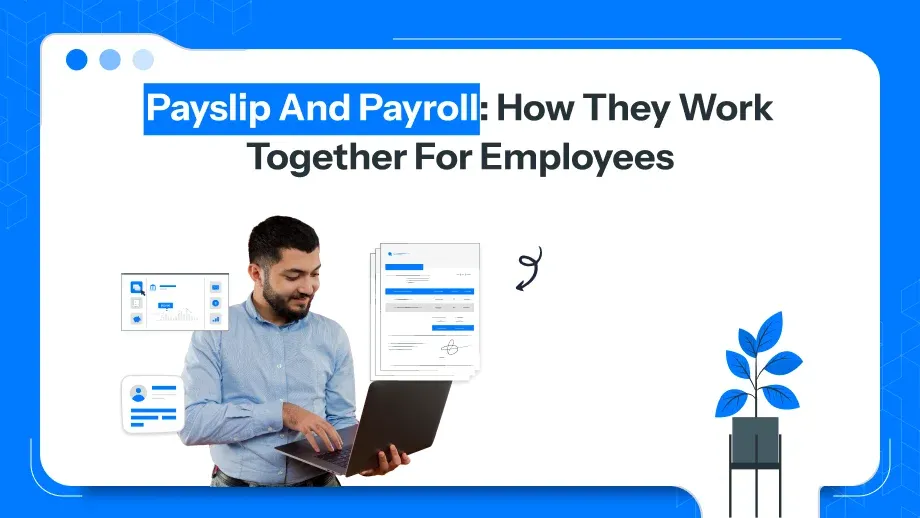
Managing and monitoring employee compensation is a must in any business to sustain operational efficiency. One of the tools that helps achieve this goal is payroll reporting. Not only do payroll reports comply with tax laws, but they also offer necessary information used in making decisions about budgeting, benefits, and employee satisfaction.
What Is Payroll Reporting?
Payroll reporting is actually the preparing and managing of reports detailing an employee’s compensation during a set period. There are certain variations in terms of their size, the complexity, and the local and international regulations it involves.
In order to keep up benefits for workers, calculate appropriate taxes like social security, pension input, and tax withholdings, or ensure that you follow federal and state tax guidelines, paychecks are essential.
A vital aspect of payroll processing and payroll software price is payroll reporting, which guarantees that both the employer and the employee are cognizant of wages, reductions, and all other associated monetary transactions.
Key Elements of Payroll Reporting
To understand how payroll reporting functions, it’s important to know the primary elements it covers. A typical payroll report includes:
Employee Information
The first section of any payroll report contains employee information. This is the foundational data that identifies the employee and categorizes them within the organization. It typically includes the following:
Employee ID: A unique number which is given to each worker for purposes of monitoring.
Job Title/Designation: the position or role a an employee performs within the company, such as Human Resources Manager, Computer Developer, etc.
Department/Division: Specifies the division that the staff member is employed by, such as marketing, finance, IT, etc. Companies can use it to monitor payroll expenses across divisions.
Joining Date: The employee’s date of recruit, which could have an effect on their eligibility of leave, incentives, or increases.
Location: In multinational organizations or those with multiple branches, this detail helps indicate where the employee works.
Gross pay
Gross pay is the gross sum of money that an employee earns before any form of deduction. It is simply all forms of compensation the employee receives for work during a pay period and, thus, may differ in the nature of the work and compensation structure.
Base Salary/Hourly Rate: A worker’s base salary, often known simply their weekly rate, is the amount someone are paid while working. It may be computed as an annual set rate or on an hourly rate.
Bonuses: A performance-based or discretionary pay made to the employees. Some examples include annual bonuses, holiday bonuses, and sales commissions.
Incentives: Supplemental pay for achieving some kind of performance target, perhaps project completion or targets.
Allowances: The gross pay can be augmented with extra allowances on account of specific expenses like travel, housing, or meal allowances.
Deductions
Deductions are amounts deducted from the gross pay of an employee for various mandatory and voluntary costs. These can be classified generally into two types:
Compulsory Deductions: This are the withdrawals that a business is required by law to make from an employee’s paycheck. Here were several instances of the same:
Income Tax (TDS): According to the taxation blocks, a company in India must apply a method called Tax Deduction at Source (TDS) to remove taxes from an employee’s pay. These amounts have been gathered by the federal government.
Provident Fund (PF): The Patriotic Fund is the moniker of this a long-standing pension savings plan. Contributions usually make up 12% of base revenue, though they can differ.
Employee State Insurance (ESI) : Is a type of social security program that offers medical and unemployment insurance to workers whose income falls below a certain threshold.
Professional Tax (PT): Different Indian states have rates that vary. a small percentage of the income goes into professional tax, which employees have to pay to states directly.
Voluntary Deductions: These are the optional deductions that are subject to the employee’s decision; they may include:
Health Insurance: They can contribute to health insurance or medical savings plans, which are then deducted from the pay.
Retirement Contributions: in addition to the Provident Save for, the employee may elect to make additional contributions towards their pension or retirement funds.
Loan Repayments: Regular repayments may be delayed if the employee has taken out a loan from a company or a bank.
Union Dues: A labor union can subtract some of a member’s pay as dues to the union.
Salary
Net pay is the amount of money that remains after all payroll deductions have been taken from a worker’s gross remunerationIt shows the amount an employee will really see in their bank account. What follows is the calculation:
Net Pay = Gross Pay minus Deductions
All deductions, including duties, SS contributions, insurance, and optional savings, are subtracted from net pay, which is the sum of base pay, bonuses, incentives, and any additional earnings. Since it demonstrates the real amount of money the employee can spend on personal expenses, this is the most significant number on each payroll report.
Overtime and Bonuses
Overtime and bonuses are additional pay, paid to employees in excess of their regular pay. These components make up the payroll, motivating employees for extra work or special performance.
Bonuses: This is a discretionary payment from employers to employees for reward purposes. This may assume several forms:
Performance bonuses: These are paid upon performance by an individual or an entire organization.
Holiday Bonuses: Paid to the employees during festival or holiday season as an added form of appreciation.
Referral Bonuses: This bonus is paid to employees who refer a candidate, which gets hired.
Ensure compliance and transparency in your payroll process.
start optimizing your payroll reporting today!
Payroll Details Report: An Indispensable Tool for Business
A payroll details report would be a specific type of payroll report that gives greater detail of all the elements involved with an employee’s pay. These reports are especially great for auditing purposes, as this allows employees and employers alike to track every aspect about a paycheck.
Payroll Reports Examples:
A Guide to Better Understanding depends on what they need, companies can utilize an assortment of payroll report formats. The examples that follow of payroll reports could prove useful to organizations:
Pay stub report :
A pay stub report is a straightforward record that lists an employee’s gross pay, deductions, and net pay for a specific time span. Employees frequently get pay stubs with each pay.
Tax Withholding Report:
This type of payroll report tracks what taxes are withheld from an employee’s paycheck. It’s needed to comply with Federal, State, and local taxing authorities.
Year-End Report:
An all-inclusive compilation report of all payroll activities over a calendar year and which is used for preparation and filing of tax, besides year-end reviews and projections. This includes total wages paid, taxes withheld and all other deductions for an individual employee.
Labour Cost Report:
The total labor cost incurred for the business is reported, along with bonuses, added benefits given to the staff, by the end of a defined period of real time feedback.
Timesheet Report:
When employees of an organization work on the basis of their work being billed in an hour, such a report records hours that are utilized to determine wage earnings.
Sample payroll report
In India, a sample payroll report would have the following several components in order to mirror the distribution of an employee’s remuneration. It also provides businesses with the ability to comply with labor laws and tax rules in India, thus helping avoid potential errors and inconsistencies.
Such detailed documentation is also seen as a way of showcasing transparency while ensuring that workers are paid on time without any mistakes, and therefore, gain trust from their employees.
The Need for Global Payroll Reporting: Rising Importance
Global payroll report management deals with the employment of workers stationed in multiple countries, where each country has regulations on reporting wages, and benefits, along with income taxes. Among the challenges found in global payroll is keeping consistency in a region versus accommodating local law.
Global payroll reporting key concerns are as follows:
Multi-country tax compliance: The individual tax laws of each country should be respected while reporting employee earnings and withholding taxes.
Currency Conversion: Payroll must be reported in different currencies, the correct conversion rate to be utilized.
Cultural sensitivity: The way payroll data should be handled differs between countries due to cultural and legal differences.
Automation Tools: Most international companies rely on specialized payroll software that helps in the automation of reporting. This makes sure that global payroll reporting is efficient, accurate, and compliant with local regulations.
Global payroll reporting also allows companies to maintain standardized reporting while still complying with the varying requirements of different countries. This ensures that employees across the globe receive consistent treatment, and businesses stay compliant with international labor laws.
Best Practices on Payroll Reporting
Accurate, timely, and compliant payroll reporting is made possible by the following best practices for businesses:
Regular audits of payroll records to capture errors or discrepancies before becoming bigger issues. To ensure accuracy plus save time, use payroll administration software or a third-party payment provider.
For every period of pay, accurate records must be kept for the purpose for integrity and compliance to tax rules.Give the workers access to their payroll records so they may review their income, benefits, and deductions.
Conclusion
Payroll reporting is a critical operation in any company, an important function aimed at allowing employees to receive their fair share of income, earned on time and in agreement with the country’s established laws.
The reports and analytics, such as the payroll details report and year-end summaries, help businesses track their compensation, taxes, and other key elements that determine their financial operations. Payroll reports examples to global payroll reporting have evolved to accommodate modern businesses’ needs in scope and complexity.





